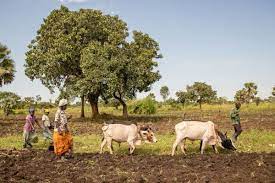
Scientists, government officials and farmers are reviving neglected crops on the field and boosting agricultural productivity in a race to cushion Africa from growing food shortages exacerbated by an unexpected climate change.
But only a trickle of donor funds and almost no private capital are directed to the small farmers who produce the vast majority of the continent’s food.
Rising temperatures mean large chunks of Africa are whipsawing between increasingly severe droughts and more frequent and intense cyclones, threatening staple foods for hundreds of millions of people.
The International Monetary Fund says each increase of 1 degree Celsius correlates to a 3 percent reduction in agricultural output in developing countries. It forecasts crop yields in sub-Saharan Africa will decline by 5 to 17 percent by 2050, despite a rapidly growing population.
Scientists, government officials and farmers are reviving neglected crops and boosting agricultural productivity in a race to cushion Africa from growing food shortages exacerbated by climate change. But only a trickle of donor funds and almost no private capital are directed to the small farmers who produce the vast majority of the continent’s food.
Rising temperatures mean large chunks of Africa are whipsawing between increasingly severe droughts and more frequent and intense cyclones, threatening staple foods for hundreds of millions of people.
The International Monetary Fund says each increase of 1 degree Celsius correlates to a 3 percent reduction in agricultural output in developing countries.
It forecasts crop yields in sub-Saharan Africa will decline by 5 to 17 percent by 2050, despite a rapidly growing population. Smallholder farmers are already struggling.
